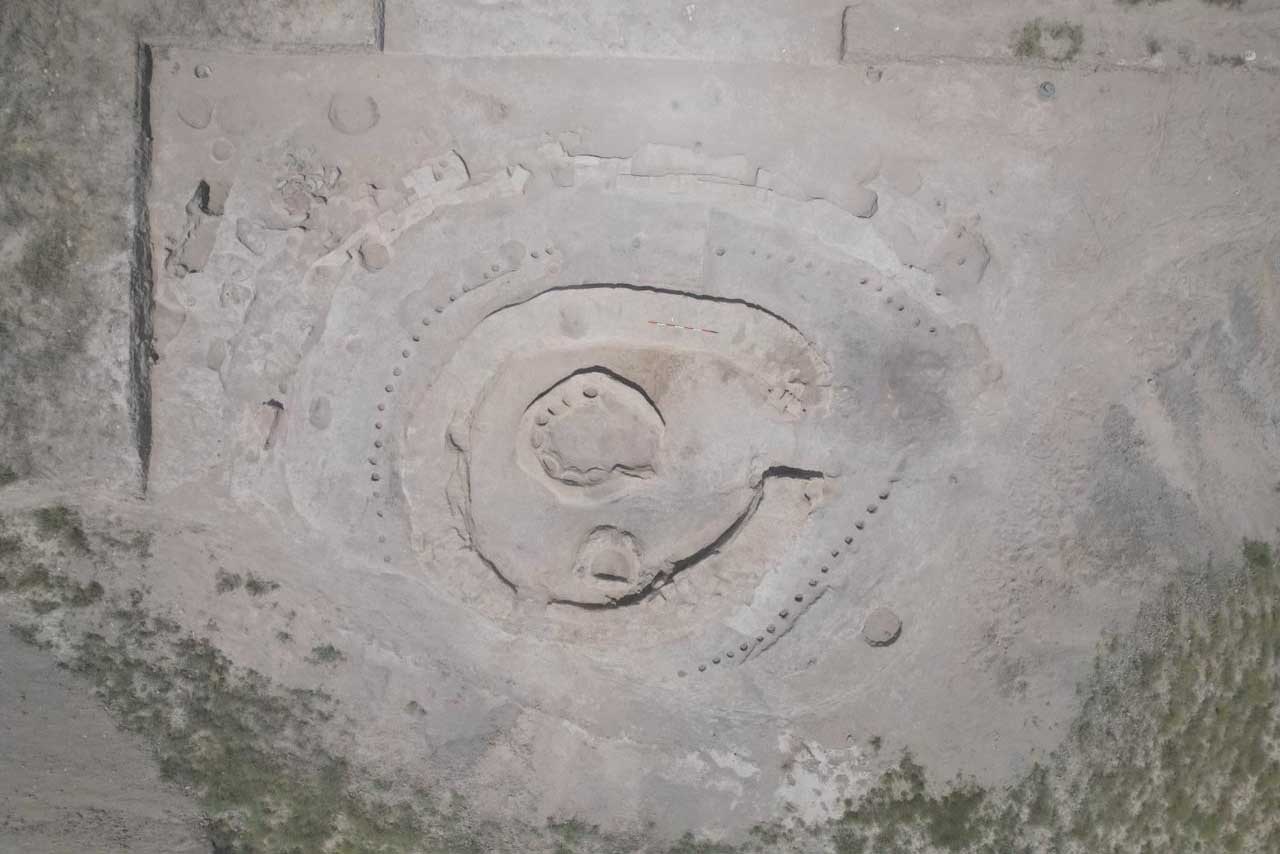Archaeologists from the University of Catania have discovered a 3500-year-old ritual table with the ceramic tableware still in situ.
The discovery was made at Tava Tepe, a Late Bronze Age site situated in the Caucasus region near the borders of Armenia, Georgia, and Azerbaijan.
According to the researchers, Tava Tepe likely served as a resting point for nomadic people travelling between the Kura River basin and the Caucasus Mountains.
Excavations have revealed a concentric-circle earthen structure featuring a kitchen area and ritual table, complete with ceramic utensils still in place, as well as housings for the braziers used for cooking.

Traces of burning indicate that food was cooked inside ceramic containers, evidenced by the remains of bowls and glasses in black burnished ceramics scattered across the excavation area.
According to the researchers: “The structure featured a monumental entrance with wooden columns and a thatched roof, likely covering the entire complex. Numerous post holes, accentuating the circular design, indicate that the structure had a diameter of approximately 15 metres.
The exterior of the circular area is marked by a large number of animal bones (cattle, sheep, and pigs), in addition to ceramic pottery deposited as rubbish. The deposit provides new insights into the type of meals consumed at Tava Tepe, which was part of a shared ritual meal among the members of nomadic communities.
The ritual nature is suggested by the discovery of human figurines placed in votive pits, and the fact that the ceramics on the ritual table appear to be intentionally sealed in a thick layer of compacted earth.
Archaeologists plan to present additional findings on Tava Tepe at a festival in mid-July. An exhibition hosted by the University of Catania in Sicily, Italy, is scheduled for December.
Header Image Credit : University of Catania
Sources : University of Catania





